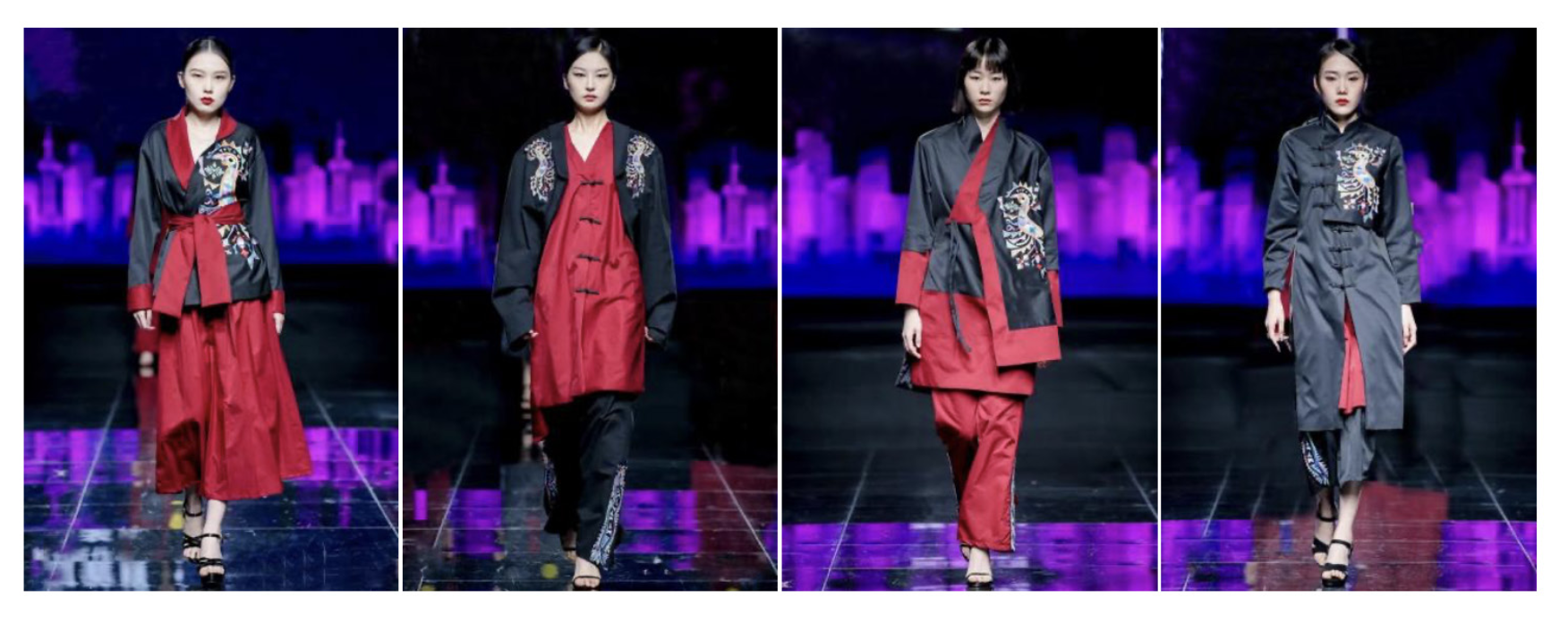THE BEAUTY OF HUIFU NIAOZHANG: EXPLORATION OF CHINESE HMONG FASHION STYLE CLOTHING DESIGN PRACTICE
Main Article Content
บทคัดย่อ
The Hmong Huifu Niaozhang costume is an essential costume of the Ganao Hmong people of the branch in Guizhou, China. It is an intangible Chinse culture heritage that significantly influences the Hmong as being an alternative beauty in a special category of traditional costume that fully reveals the artistic character of the costume of the Ganao Hmong people. This paper attempts to answer the academic community's interest in the study of the beauty of Hmong costume art elements and the beauty of modern fashionable clothing in the Hmong style. “The researcher attempts to study the Huifu Niaozhang of the Hmong ganao people in Guizhou in terms of clothing decoration motif and structure, innovative clothing design practices that combine traditional and modern methods.” In this study, through in-depth field research on the traditional Huifu Niaozhang costume of the Hmong people in the southeastern region of Guizhou Province, China, it was determined that the graphic decoration and meaning of the Hundred Birds costume are inextricably linked to the life and social activities of the Hmong people, their folk beliefs and regional culture, as well as other factors that influence each other.
The results of the research found that:
1) the Huifu Niaozhang costume Decoration reflects the wisdom and hard work of the Hmong people, using various graphics to record their production activities and beliefs on the costume.
2) The costumes of the Hmong of the Ganao branch are similar to those of the Hmong branch and have characteristics that make them unique. In terms of patterns, the clothing patterns of the Ganao Hmong ethnic group are more concrete, with more categories of patterns and richer color combinations. In terms of clothing styles, the clothing styles of the Ganao Hmong ethnic group are more simple and loose, and the area that can be decorated with patterns is larger.
3) The study combines elements such as the style of the Chinese Gua, standing collar, decoration, and slanted front placket with modern clothing structures that pursue fit and practicality. By using varying symmetrical and asymmetrical design methods to decorate clothing, a modern fashion outfit with Chinese characteristics and Hmong ethnic style is formed. Therefore, Bainiaoyi has extremely high theoretical research and practical application value, which can further create new artistic forms and styles
Article Details
เอกสารอ้างอิง
Du, L. (2020). The Ideological Basis and Theoretical Source of Chinese Design Aesthetics and Its Influence on Chinese Design. Sichuan Province Leather Industry Association.
HU, Y. (2022). Study on the Design Aesthetic Concept of Fashion Art, Art Wide Angle. Liaoning Institute of Literature.
Jia, X. Z. (2022). International Fashion System and the Cultural Inheritance and Subject Reconstruction of Chinese Style Clothing. The Chinese National Academy of the Arts.
Liao, C. C. (2018). Huifu Niaozhang-Research on Decoration of Hmong Nationality Silkworm Embroidered Bird Clothes. Tsinghua University Press.
Li, X. F. (2022). Explore the Aesthetic Appreciation of Song Dynasty Costumes. China National Textile Information Center.
Qi, W. D. (2022). Exploration of the Integration of Li Nationality Decorative Patterns and Costume art. Shanghai Textile Science Research Institute.
Li, S. N. et.al (2019). Chinese Style and New Chinese Style in Fashion Design. Industrial Design.
Ren, Y. H. (2021). Research on Ecological Aesthetic Consciousness of Ethnic Minorities-Taking the Clothing of Hmong Women in Qiandongnan, Guizhou Province as an Example, Western leather. Sichuan Province Leather Industry Association.
Tian, X. J. et.al (2022). Research on the Interaction Between Totem Worship and Cultural Confidence-Take the Chinese "Dragon" Totem as an Example. Beibuwan University.
Yu, L. L. (2021). Chinese Traditional Color Discussion. China Popular Color Association.


